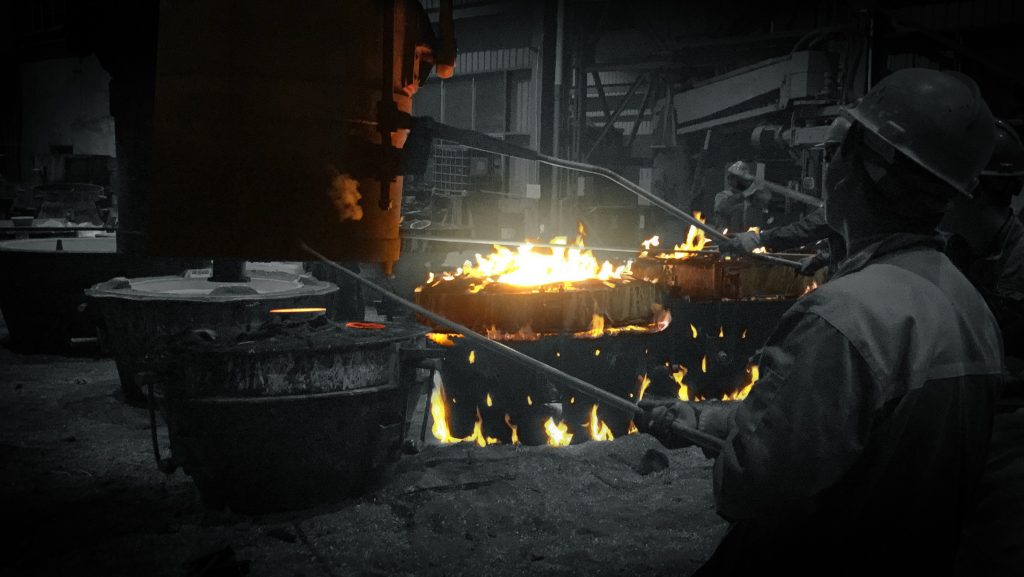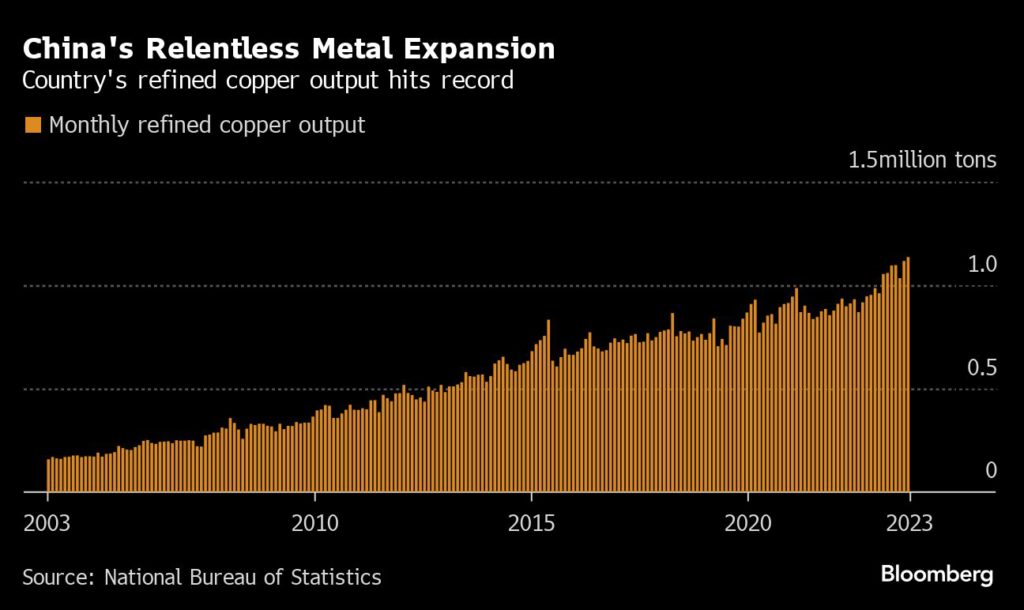
The clock is ticking on the relentless expansion of China’s copper smelters.
Beijing is discussing plans, and has sought industry opinions, on imposing curbs on the world’s biggest processor of the metal to reduce overcapacity and carbon emissions, according to people familiar with the matter, who asked not to be named as the information isn’t public. The constraints could come into play by the middle of the decade, they said.
It’s a move that has the potential to reshape global trade in the metal. China is importing copper ore at a record pace to feed the expansion, which is beginning to crimp purchases of the refined metal and raise concerns that smelters are becoming overly reliant on foreign suppliers.

At the same time, a shortage of mined copper is looming as smelters across the world ramp up operations to produce a metal that’s deemed crucial to the energy transition. Falling grades and rising exploration costs are another headwind to supply.
China has imposed curbs to manage supply and shrink emissions in some of its other world-leading commodities sectors. A ceiling of 45 million tons on aluminum capacity has been in place since 2017, while oil refining capacity will be subject to a 1-billion-ton limit by 2025. China’s steel industry has been told to cap annual production at or below the previous year’s level since 2021.
The National Development and Reform Commission, China’s top economic planning agency, didn’t immediately respond to a fax seeking comment.
Rather than impose a fixed ceiling on copper, one scenario under discussion is for smelters to complete existing projects in the pipeline before restrictions are imposed around the middle of the decade, the people said. After that, extra capacity would be controlled via emissions targets managed by individual provinces, they said.
China’s base metals industry, which includes copper, has said it aims to peak emissions before 2025. In that context, the plan would allow smelters to expand after 2025 as long as they retire dirtier operations. It could also lead to a rush to add capacity in the next two years or so, or motivate smelters to expand abroad, which is what has happened in the aluminum industry.
China’s annual copper smelting capacity is currently about 8.8 million tons, with a near-30% expansion of 2.4 million tons set for completion by 2026, according to Beijing Antaike Information Development Co. Emissions are becoming a bigger factor in global trade, highlighted by the European Union’s planned carbon tax on some items including steel and aluminum — though not yet copper — from 2026.
Comments